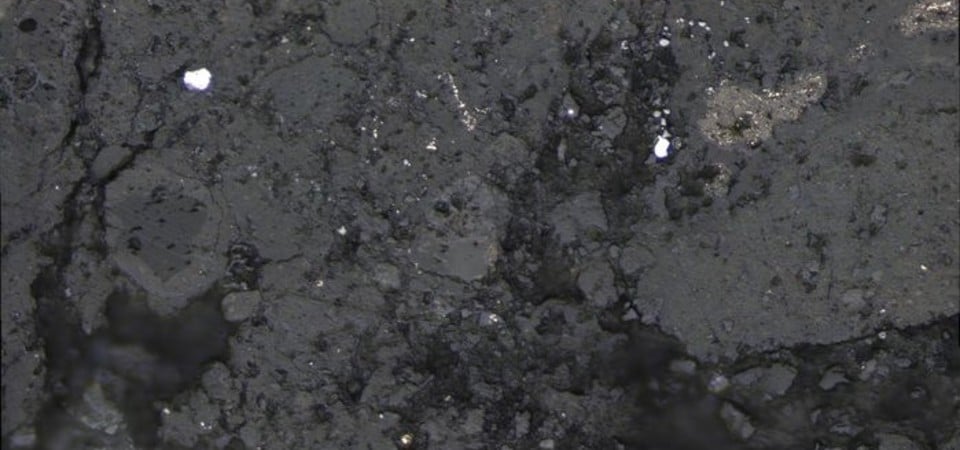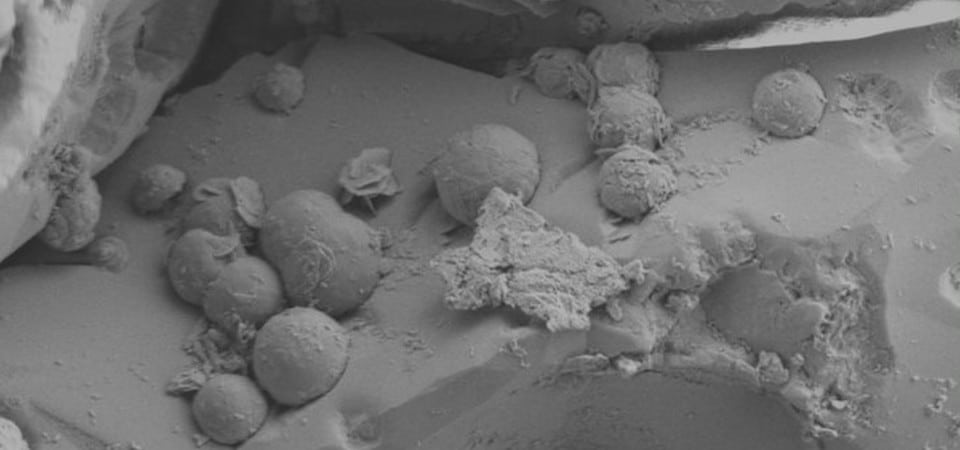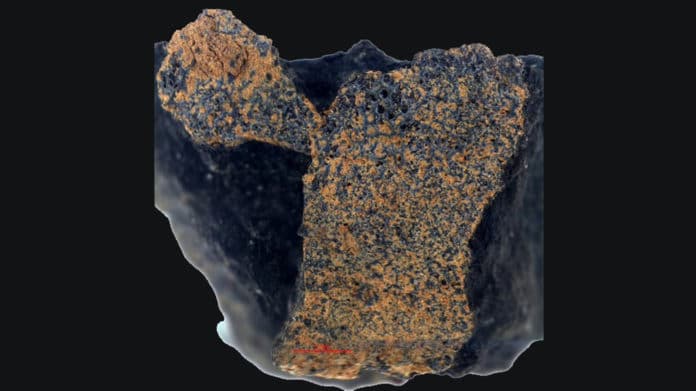A small ancient meteorite- almost 4.6 billion-year-old is likely the debris from the birth of the solar system. This 4.6 billion-year-old meteorite, found in the imprint of a horseshoe, trail carved in a field in Gloucester, could explain the origin of life on Earth.
According to scientists, this small charcoal-colored space rock is a rare example of a carbonaceous chondrite. Carbonaceous chondrite is a class of chondrites that offer insights into the early history of the solar system. About 3 percent of all meteorites which fall to Earth belong to this classification, i.e., Carbonaceous chondrite meteorites.
Derek Robson, a resident from Loughborough, found this ancient meteorite in March. As the scientists suggest, the meteorite likely to come from the asteroid belt between Mars and Jupiter, which formed early in the solar system’s history.

Using techniques like electron microscopy, vibrational spectroscopy, and X-ray diffraction, scientists at Loughborough University analyze this small meteorite to determine its structure and composition. Electron microscopy reveals the surface morphology of the meteorite at the micron and nanometre scale. And the vibrational spectroscopy and X-ray diffraction give detailed information about chemical structure, phase and polymorphism, crystallinity, and molecular interactions.
Unlike other ancient space debris, this meteorite doesn’t appear to undergo violent cosmic collisions. It resembles loosely held-together concreted dust and particles.

Shaun Fowler – a specialist in optical and electron microscopy at the Loughborough Materials Characterisation Centre (LMCC), said, “The internal structure is fragile and loosely bound, porous with fissures and cracks.”
“It doesn’t appear to have undergone thermal metamorphism, which means it’s been sitting out there, past Mars, untouched, since before any of the planets were created, meaning we have the rare opportunity to examine a piece of our primordial past.”
“The bulk of the meteorite comprises minerals such as olivine and phyllosilicates, with other mineral inclusions called chondrules. But the composition is different from anything you would find here on Earth. It’s potentially unlike any other meteorites we’ve found – possibly containing some previously unknown chemistry or physical structure never before seen in other recorded meteorite samples.”

Director of Astrochemistry at EAARO Derek Robson said, “Carbonaceous chondrites contain organic compounds including amino acids, which are found in all living things. Being able to identify and confirm the presence of such compounds from a material that existed before the Earth was born would be an important step towards understanding how life began.”
